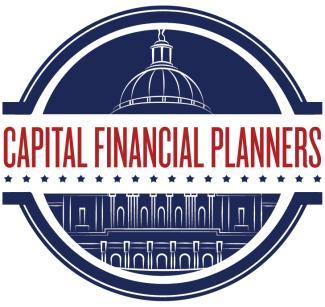
Can I afford an early retirement? 5 things to consider before making the leap.
It’s no secret that the new administration is on a mission to downsize the federal government. From return to office mandates to the reappearance of Schedule F, many Feds may be finding themselves on a fast-track to retirement whether they wanted it or not.
Depending on your career stage, your reaction could fall on a spectrum from “well it was about time to retire anyway” to “I need to start looking for new jobs now”.
No matter your situation, step back, take a deep breath, and assess your options. Tammy Flanagan recently wrote a fantastic article about some of the administrative things to consider as a federal employee who is facing an unexpected retirement.
The goal of this article is to supplement that by focusing on the financial planning aspects to consider if your time with the government is coming to an early conclusion.
1. Understand your benefits
Even if you haven’t worked a full career as a federal employee, odds are high that you’ve accrued some benefits that will transition into retirement.
As long as you’ve worked as a federal employee for at least 5 years, you have earned yourself a pension. Depending on your age and total years of service, you may be entitled to that pension right away, or you may have to wait until you’re 60 or 62 to begin drawing that benefit.
Along with understanding the dollar amount of your pension and when it will be paid, it’s important to know whether your other benefits like the Federal Employee Health Benefit (FEHB) will continue.
For example, if you qualify for an immediate pension, you get to keep your FEHB in retirement (and it remains subsidized by the government). If you have your MRA +10 years of service, but don’t qualify for an immediate pension yet, you may lose your FEHB until your pension picks back up at 62. Health insurance can be a substantial expense, so knowing whether or not you’ll be covered is extremely important.
FERS Pension Eligibility Requirements
2. Know your cash flow
Too many people limit their retirement preparation to a saving/investing goal. That’s only one side of the equation.
Retirement sustainability is an equation with income (or retirement account withdrawals) on one side, and spending on the other. The higher your expenses, the more money you need to generate from your pension, social security, and investment withdrawals.
So, if you believe you may be facing an early retirement or a prolonged period without work, one of the first things you should do is become intimately acquainted with your spending.
Once you know how much is going out the door, think about what will be coming in. If you qualify for an immediate pension, that’s one source. You may also have social security in the future, but there’s a good chance there will be a gap that needs to be bridged with savings or retirement account withdrawals.
Calculate the difference between what’s coming in and what needs to go out to arrive at your distribution needs.
3. Distribution options
Once you know how much you need, the next step is figuring out where to get it. Is the TSP your only savings vehicle? Do you have money in IRAs, annuities, cash, or other investments?
Depending on your age, you could be limited in your withdrawal options. Most retirement accounts, like Traditional and Roth IRAs require you to be 59.5 before withdrawing assets or else you face a 10% penalty on top of the taxes that you would normally pay for the withdrawals.
One TSP provision that could be a saving grace for some Feds is the age 55 early withdrawal rule. This rule states that if you separate from service (either voluntarily or involuntarily) at age 55 or later, you can take distributions from the TSP with no penalty. You still have to pay taxes if you’re distributing from the Traditional side of the account, but you don’t face the early withdrawal penalty.
Keep in mind, you must be an active employee until you are 55 or later. If you separate from service at 54, this option goes away, and you now have to wait until 59.5 to take the distribution. This rule also disappears if you roll the TSP into an IRA, so if you’re counting on using the early withdrawal provision, make sure to keep your funds in the TSP, at least until you’re 59.5 and can draw from IRAs without penalty.
4. Withdrawals from investment accounts
If you’ve made the decision to draw from an investment account, don’t make the mistake of assuming all withdrawals are created equal.
If you’ve been investing wisely, you likely have a diversified mix of investments. You’ll have some aggressive investments that are designed for long-term growth but may be volatile. You’ll also have some more liquid investments designed to decrease the overall volatility of your portfolio.
If your plan is to just take money out proportionately from each of your funds, you risk needing to sell a risky investment when the market is down or sell a very conservative investment when the market is up.
Wouldn’t it make more sense to sell something more conservative when the aggressive investments are down, to give them time to recover?
To facilitate this, you can use something called the Bucket Strategy. This strategy allows you to plan out when you’ll need cash, and allocate your portfolio, so there is enough money in conservative investments to meet those goals while leaving enough in growth-oriented investments so that your portfolio keeps up with (or hopefully exceeds) inflation.
5. The mental Transition
If you’re even considering retirement right now, that means you’ve spent the majority of your life in “saving” mode. You’ve been told to put money in your retirement account and never touch it. You’ve become accustomed to watching the account grow over time and find comfort in watching the number rise.
Now, you’re preparing to enter the “spending” phase of life. For a lot of people, that’s not an easy switch.
Spending from your retirement accounts can be accompanied by a lot of anxiety, as you wonder whether or not you’re drawing a sustainable amount, if you’ve chosen the right funds, and if you’re making smart tax decisions.
To alleviate this anxiety, many people seek out the help of a financial planner to help them strategically plan their retirement.
If you’re approaching this transition point and would like a second set of eyes on your financial situation, let’s chat.
Previously published on GovExec.
Austin Costello is a certified financial planner with Capital Financial Planners. If you don’t feel confident in your current or future retirement withdrawal strategy and would like feedback, you can register for a complimentary check up. For topics covered in even greater depth, see our YouTube page.
The opinions voiced in this material are for general information only and are not intended to provide specific advice or recommendations for any individual.
Investing involves risk including loss of principal. No strategy assures success or protects against loss.
Originally published on GovExec.

